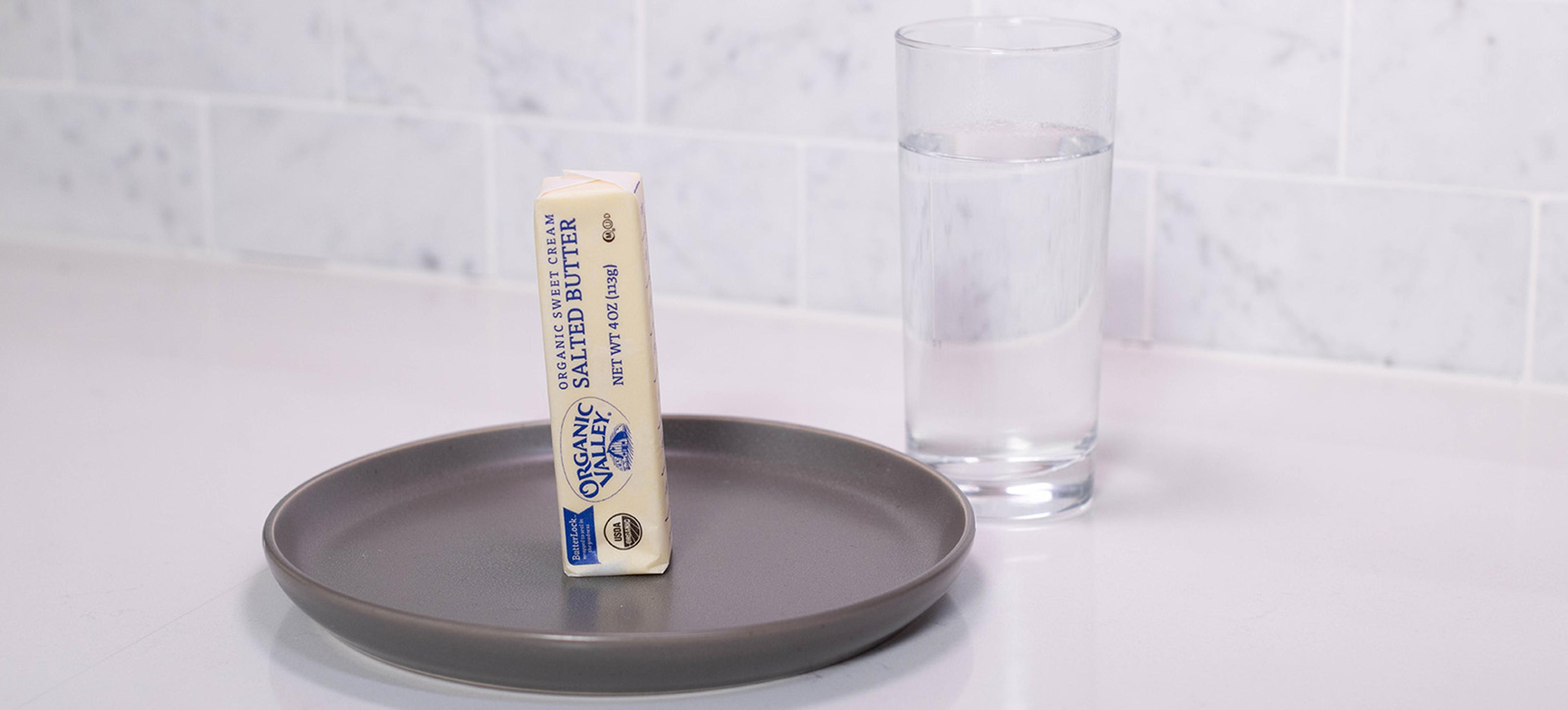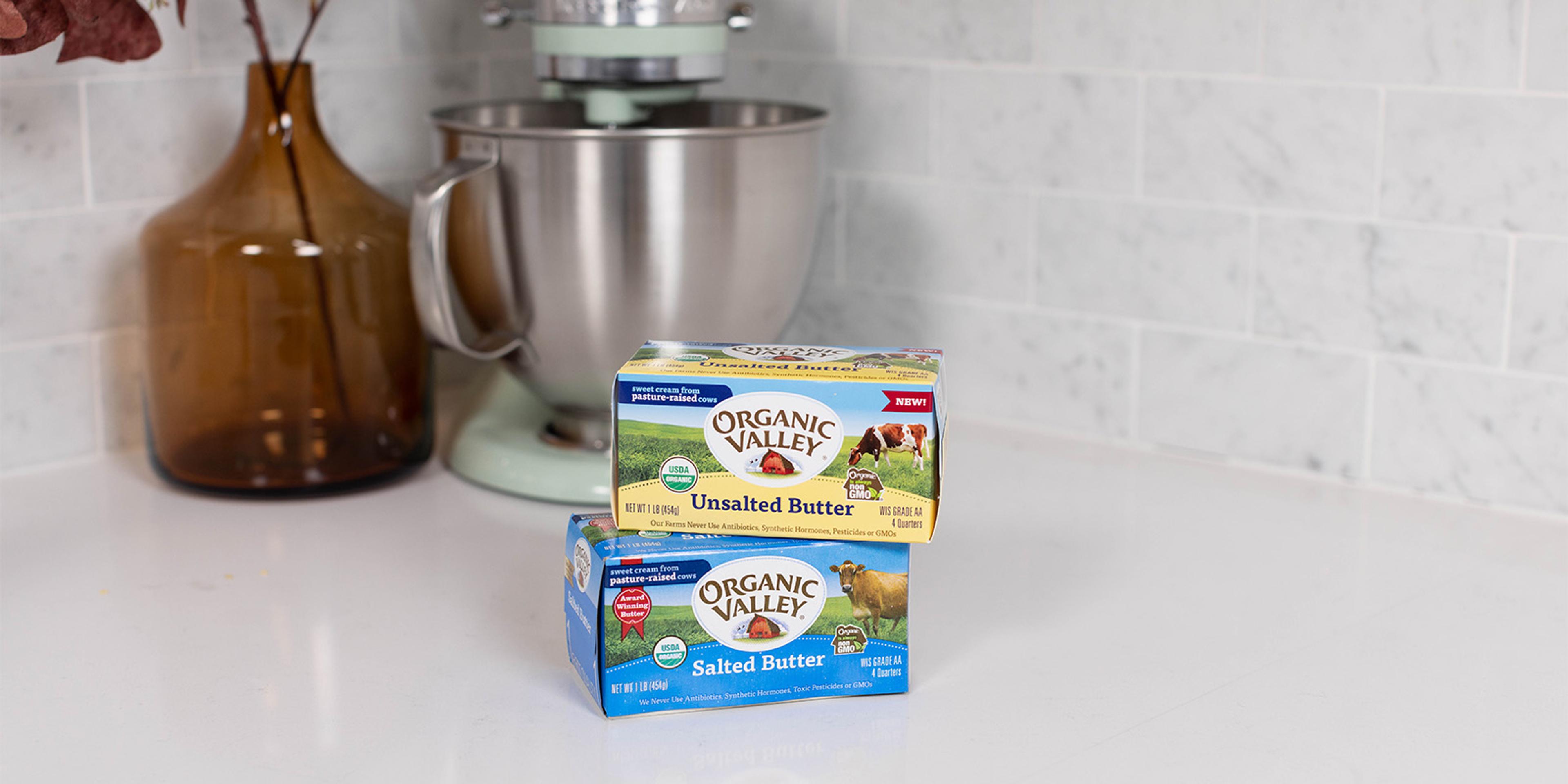
Food
7 Easy Ways to Soften Butter
There are many uses for butter, and a lot of those uses involve softened butter. Whether baking or spreading on toast, it’s no easy task to work with a hard stick of butter that comes straight out of the fridge or freezer.
So, when all we have is a stick of cold organic butter, how can it be quickly softened (without melting it) so that it’s ready for toast or to make cookies?
When it comes to baking, what is the best butter temperature? Many recipes will call for “softened” butter, but what does that really mean? Let’s take a deep dive into all of these butter questions and more!
What Is Softened Butter?
Softened butter is room-temperature butter. Room temperature is 65 to 68 F, so the butter will still feel cold to the touch and will not be soft or mushy. This is typically what is called for in baked goods since the creaming process of combining the butter and sugar incorporates air, which aids in the rising process.
Room-temperature ingredients also blend more evenly, creating an even-textured bake. Most dessert recipes, like cakes, cupcakes and cookies, call for room-temperature (or softened) butter. The butter will also spread easily and is the best temperature of butter to use as a condiment on bread and pastries.
Now that we know what softened butter is, do we really have to wait for it to warm up on the counter? There are many ways to soften butter that don’t involve waiting an hour or two for it to soften on your counter at room temperature. Let’s look at alternative ways to soften butter more quickly.

1. Soften Butter Using a Stand Mixer
Are there ways to soften butter without microwaving it? Absolutely!
One great way to soften butter quickly while baking is to use a stand mixer. You’re already going to use it for your baking, so why not skip a step and use it to help soften your organic butter as well!
To soften butter using your stand mixer, simply cut the butter into 1-inch slices and mix them on medium-low speed (using the paddle attachment) until it reaches the desired temperature. Scrape down the bowl once or twice to ensure that the butter is well distributed. The friction between the paddle and the bowl will soften your butter, and then it will be all set for the addition of the sugar and the rest of your ingredients! This method will soften your butter in about 5 minutes.

It’s easy to soften cold organic butter using a heated glass or bowl.
2. Soften Butter Using a Warm Bowl or Glass
Another way to soften butter is to warm up a bowl and use its radiant heat to quickly soften a stick of butter.
Heat water in a bowl in the microwave, then remove the water and put the bowl upside down over the wrapped butter so the heat from the bowl warms the butter and makes it softer. You can use a tall drinking glass to do this as well. This method will bring the butter to room temperature in about 5 minutes.

3. Soften Butter Using Your Body Heat
Looking for an unconventional way to soften butter? Check out this butter-softening hack. Sarah Crawford from Broma Bakery introduced the concept of using your body to quickly bring a cold stick of butter to room temperature. Simply place the wrapped stick of butter in your waistband and let it sit for about 5 minutes, then turn it so that both sides are heated evenly. This will soften your butter in about 10 minutes.
4. Soften Butter in the Microwave
You can use the microwave to soften butter, but take care not to overheat it. Especially for baking, overheating the butter will cause it to become partially melted (instead of softened), which will affect the final texture of your bake. You could also run into uneven softening where the bottom of the stick of butter is warm, but the top remains colder than room temperature.
To ensure that the stick of butter is softened evenly, set your microwave to medium power and place the unwrapped stick of butter on a plate. Turn the stick of butter after every 5 seconds of heating, for a total of 25 to 30 seconds.
5. Soften Butter Using Radiant Heat from the Microwave
Another way to soften butter is to use radiant heat from your microwave, very similar to using radiant heat from a warm bowl. This method is primarily for butter to bake with since the butter will need to be cut into six or eight slices.
To use this method, pour 1 to 2 cups of water into a microwave-safe bowl (or leave it in a glass liquid measuring cup) and heat it for 2 minutes on high until the water is very hot. Cut the stick of butter into six or eight slices and place it on a plate or in a heat-proof bowl.
Once the water is done heating, carefully remove it from the microwave and place the butter inside, immediately closing the door as to not let out too much heat. Do not turn the microwave on, but instead use the radiant heat from the hot water to slowly bring up the temperature of the butter. This will soften your butter in about 10 minutes.

Left to right, chilled, softened and overly softened butter.
6. Soften Butter Using Lukewarm Water
You can also soften butter by sealing it in a bag and placing it into a bowl of lukewarm water. The water temperature should still feel slightly cold to the touch, but it will be warmer than the cold butter, which helps it soften quickly. This method works best if the butter is in slices, so it would be primarily used if you are using the butter for baking.
Slice a stick of butter into six or eight slices and place them into a well-sealed food storage bag. Place the bag into a medium or large bowl of room-temperature water, ensuring that it is fully submerged. This method will take about 5 minutes to soften butter.
7. Soften Butter at Room Temperature
Lastly, the most common way to get butter to room temperature is to simply leave it out at room temperature. Since it takes a stick of butter one to two hours to come to room temperature after removing it from the fridge, there are a few things you can do to speed up the process, if desired.
One way to more quickly soften butter without implementing any of the above tactics is to cut the butter into small cubes and place it on a plate. This will likely cut your softening time in half, shortening the wait time to 30 to 60 minutes. This method is best if you will be using the butter for baking since you will need to cut the butter up instead of leaving it in its original form.
Another quick method that doesn’t involve heating is to place the butter in a gallon airtight food storage bag and use a rolling pin to flatten the butter. The friction from the rolling and the increased surface area will soften your butter almost immediately once you have it rolled out. This method is also best used for baking and will have your butter softened within about 5 minutes.

The Best Way to Store Butter
Now that you have successfully softened your butter, you may be wondering what the best ways are to store it safely. These methods can vary depending on whether or not your butter is salted or unsalted.
Read up on the best ways to store your butter to preserve taste and nutrients with Organic Valley’s article on How to Store Butter. Wondering about the difference between salted and unsalted butter? Find the answer here!
Does this article have you in the mood for some butter? Be sure to grab Organic Valley Salted Butter or Organic Valley Unsalted Butter on your next grocery run. Check out the store locator to find Organic Valley products near you.
Jackie Thesing is a Minnesota girl, born and raised. She, her husband and three young children live in the Twin Cities area where they love to spend time outside and be together as a family. After leaving her corporate job to stay home with her children, Jackie created a blog, Sweet Girl Treats, to share her favorite recipes and baking tips. When Jackie isn’t busy with the many tasks of motherhood, you’ll likely find her in the kitchen developing new desserts, probably with at least one of her “sweet girls” at her side! Follow Jackie’s baking journey on her Instagram page @sweetgirltreatsmn and subscribe to her blog!
Related Articles
- Tags:
- DIY,
- meal prep


















